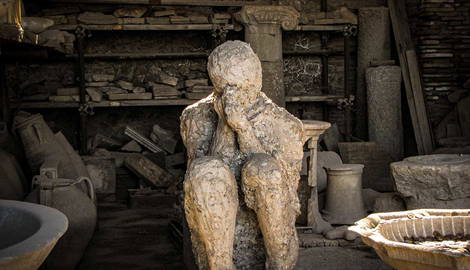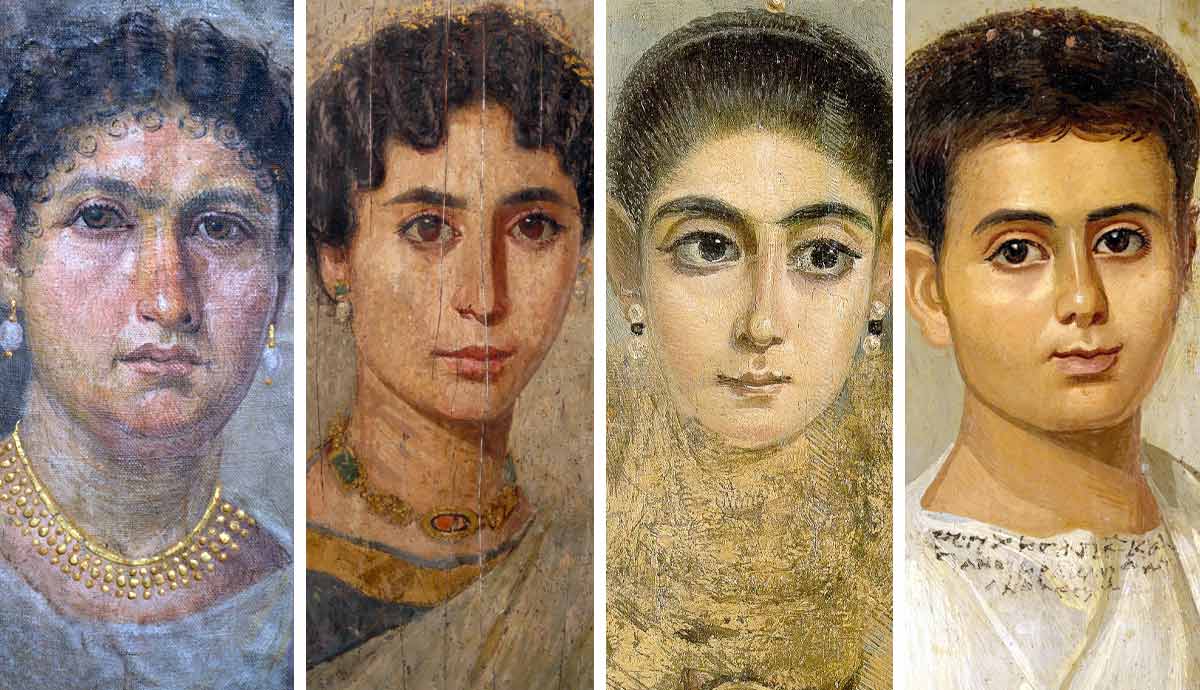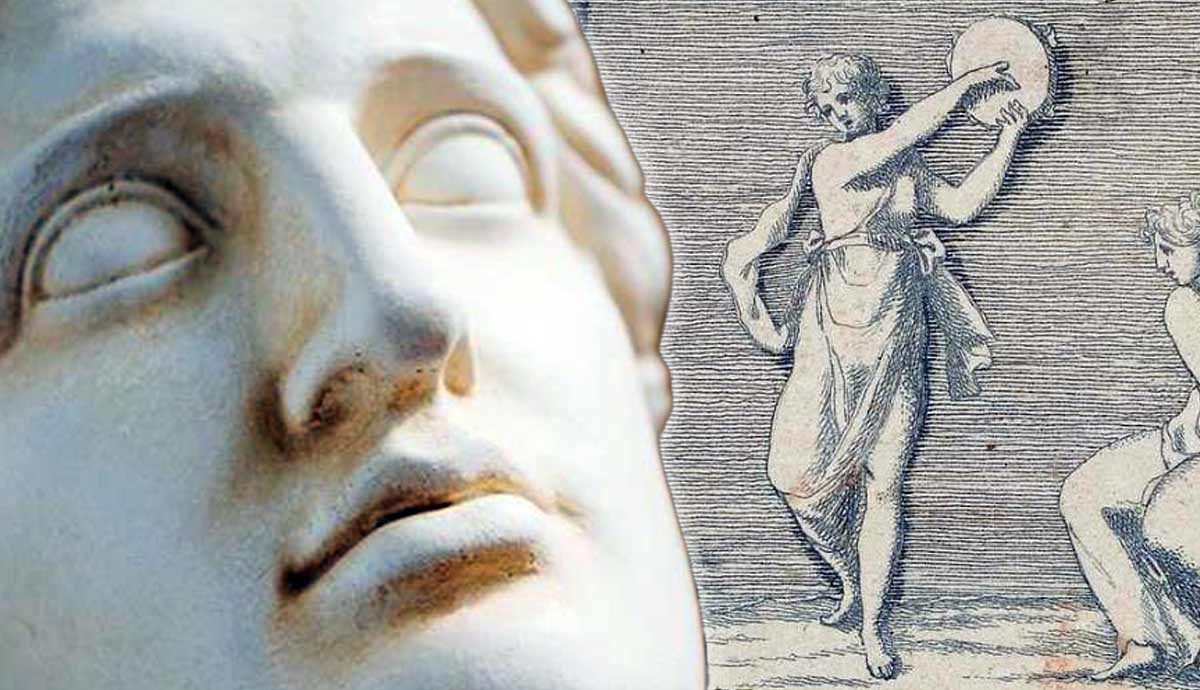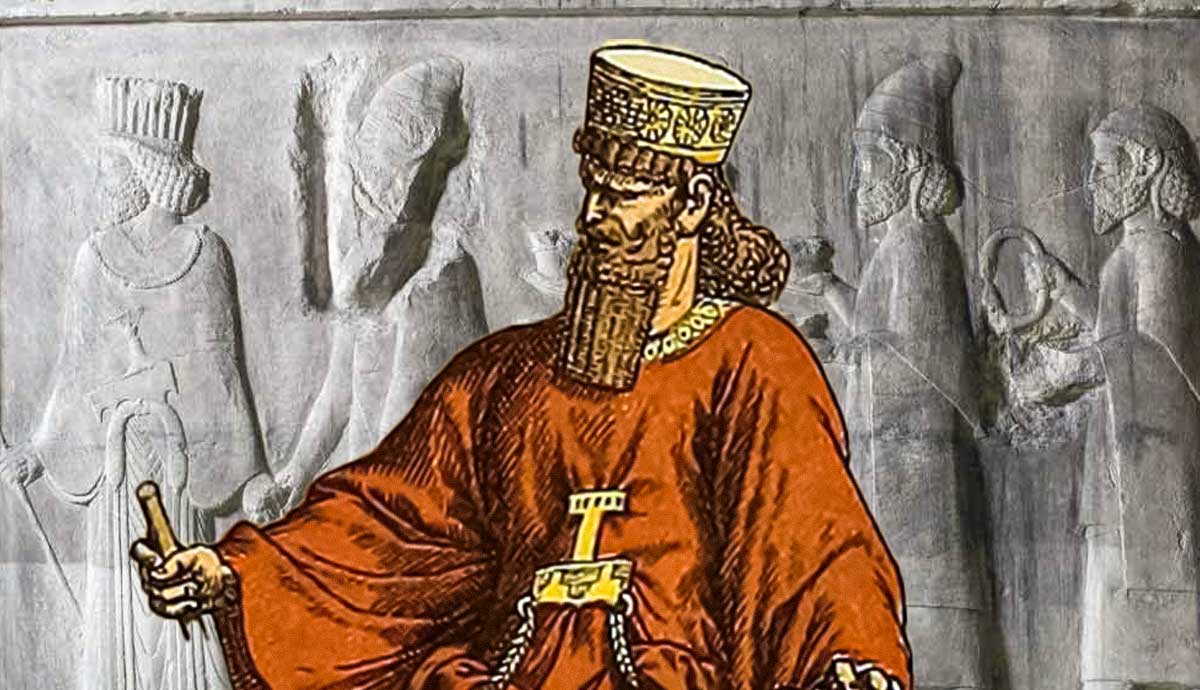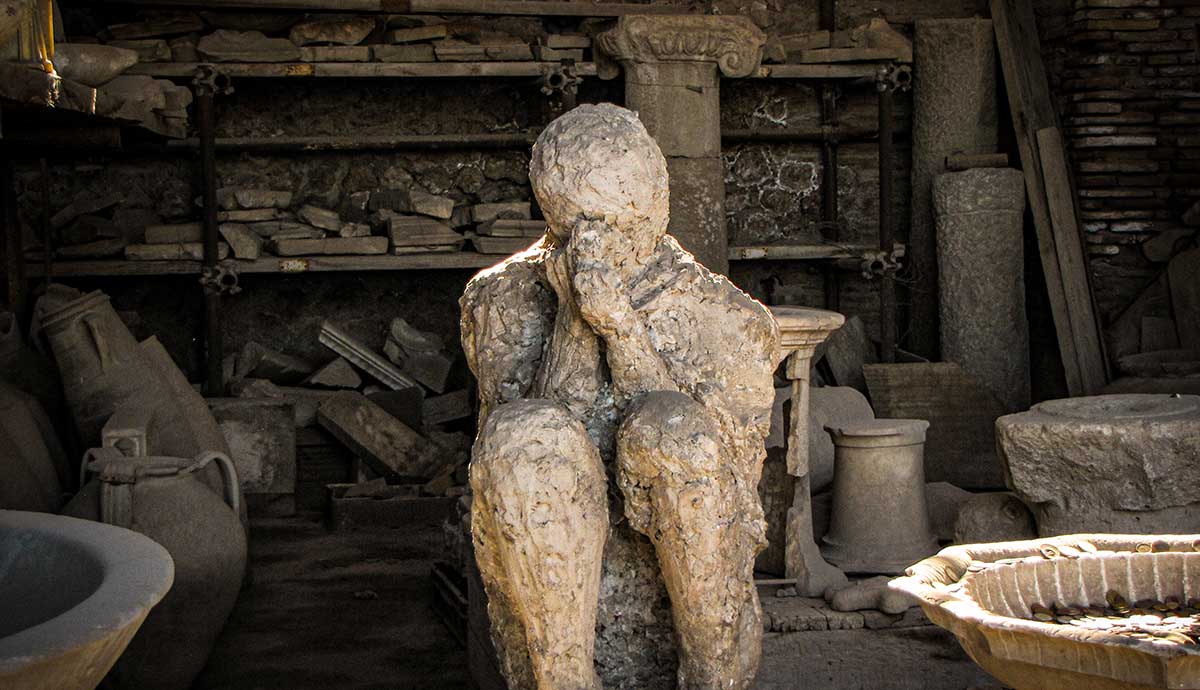
In 79 CE, the Vesuvius volcano in Southern Italy erupted, destroying settlements around it and taking the lives of up to 16,000 residents. The most significant death toll occurred in the cities of Pompeii and Herculaneum, wealthy local centers of trade and production. Since their re-discovery in the late 16th century, archaeologists have uncovered the victims’ remains. Gradually, they learned more and more about their lives and deaths. Read on to learn what happened to Pompeii and Herculaneum victims and how archaeologists preserve their bodies.
What Happened to the Victims of the Pompeii Tragedy?

In 79 CE, the Vesuvius volcano near Naples erupted, burying the cities of Pompeii and Herculaneum under ashes, stone, and toxic gases. Many locals managed to evacuate, but still, around 2,000 died in Pompeii and 300 in Herculaneum. However, historians estimate the total death toll from both cities and the surrounding areas to be around 16,000. Today, archaeologists have discovered over 1,000 bodies, which has given invaluable insights into the area’s culture and residents’ habits.
The locals were not expecting the catastrophe as the previous eruption of Mount Vesuvius happened 1,800 years prior. However, an earthquake occurred almost two decades before the tragic eruption that buried Pompei, and present-day geologists believe it could have triggered the catastrophe.

The destruction of Pompeii and Herculaneum and the death of their remaining residents occurred in several phases. The first stage hit those who were closer to the volcano and did not evacuate in time. These people were killed by stones falling from above and collapsing roofs and walls. Their bodies decomposed, leaving only the bones, sometimes with metal artifacts like armor or jewelry still attached. Some of these people died slowly and painfully in the collapsing city.
The second wave of destruction came with the hot pyroclastic flow—high-temperature gas and volcanic matter that covered the city and the surrounding area. The victims of that stage mostly died instantly from heat exposure. Buried under the pyroclastic flow, the victims’ bodies retained their positions from the moment of their death and were completely engulfed by the volcanic mass. Gradually, the organic matter decayed, leaving body-shaped cavities in the calcified ashes. These cavities later would give invaluable information to archaeologists and shed light onto the lives and deaths of victims.

Apart from the imprints, archaeologists discovered large masses of skeletal remains on the shore of Herculaneum. The people who died there most likely were waiting for rescue boats but suffocated in toxic fumes. Among them was the famous natural historian and writer Pliny the Elder, who led the rescue mission. His nephew, Pliny the Younger, later described the volcanic eruption and investigated the death of his uncle.

One of the most famous skeletons found in Herculaneum was the so-called Ring Lady. This woman, in her forties, was found alone, still wearing impressive amounts of gold jewelry, including several rings. She most likely died during the evacuation attempt and was carrying all her precious belongings with her.
Today, the Pompeii and Herculaneum complex is the largest functioning archaeological park in the world, and more than 2.5 million tourists visit it annually. At the same time, excavations and research are still ongoing, and archaeologists continue uncovering new buildings adorned with paintings and mosaics, precious objects, and bodies.
Giuseppe Fiorelli’s Breakthrough

A breakthrough in the research and preservation of Pompeii victims’ bodies is attributed to Italian archaeologist Giuseppe Fiorelli. As a student, Fiorelli abandoned his law aspirations to study numismatics and archaeology. He had a difficult relationship with the authorities before the establishment of the unified Kingdom of Italy and was even imprisoned for two years for his liberal views. However, in 1860, after the array of cities and kingdoms was unified into one country, Fiorelli was appointed director of the Pompeii excavation.
His methods were unconventional, surprising, and even shocking for his contemporaries. Instead of letting the archaeologists browse the space in search of precious objects, Fiorelli divided the area into segments and ordered them to excavate little by little, with detailed documentation of every discovery and the nuances of the scene. Fiorelli was also the one who opened the excavations to the public for a fee, turning Pompeii into the tourist site we know today.

Another significant achievement of Fiorelli was his experimental way of preserving the victim’s bodies. Upon discovering the body-shaped cavities in the layers of compressed ash, he poured liquid plaster into them and let the substance dry. After the plaster dried, he carefully removed the soil, revealing a plaster cast of a body. The method was soon called the Fiorelli Process after its founder. Present-day art historians discovered remains of bones inside some of Fiorelli’s casts, which turned them from simple plaster sculptures to actual human remains. These casts are still present on the site and remain among its most important artifacts.
DNA Analysis

Many bodies and body imprints found in Pompeii were interpreted according to stereotypes and expectations of their archaeologists’ era. Therefore, many famous figures’ identities and characteristics were only assumptions. In the 2020s, a group of archaeologists made a DNA analysis of the remains found inside plaster casts and made a long list of surprising discoveries. The analysis revealed the biological sex and ancestry of the victims. The supposed figure of a mother embracing her son turned out to be a man of African origin with a child unrelated to him biologically. Another discovery was the biological sex of the two figures, who were believed to be sisters based on jewelry found on their bodies. At least one of the figures turned out to be male, shattering the hypothesis.
Animals in Pompeii

Apart from human remains, archaeologists found bodies of animals—mostly dogs, horses, mules, and boars which were kept in households. Many of these animals ran away during the eruption, while others either refused to leave their owners or simply could not escape. Studies of animals have shown that Pompeiian horses were smaller than the animals we know today. The imprints of harnesses have valuable information on the material culture and design practices of the locals. One animal was a guard dog tied to a post inside the house of Marcus Vesonius Primus. Forgotten by its owners, it could not escape to safety and slowly suffocated under the falling ashes. The cast of its body forever preserved the agony of the animal.
Pompeii Refugees: Were There Any Survivors?

Despite the scale of the tragedy, thousands of Pompeii and Herculaneum residents managed to escape and re-settle. Recently, historians uncovered evidence of refugees rebuilding their lives in surrounding areas. They searched the archives for specifically Pompeiian names and found plenty of information about businesses, marriages, and charity projects concerning the Pompeii refugees.
Historians discovered that most survivors populated local areas. Moreover, cities near Pompeii urgently built extra housing and other facilities to accommodate thousands of incoming refugees. Most Pompeians preferred to keep their ties with their community, marrying within familiar families and arranging shared business enterprises.
The Ethical Issue of Pompeii Bodies Research

The study and display of human remains is a pressing ethical concern within the archaeological discipline. European institutions had a long history of demonstrating human remains as artistic, religious, scientific, and anthropological objects, sometimes with theatrical set-ups and decorations. However, in the 21st century, experts initiated a conversation on the ethical implications of such practices. Many researchers believed that the museological display of remains was disrespectful to the deceased and called for alternative solutions. They feared that the voyeuristic element of witnessing these casts was overpowering their educational value.

In 2010, the archaeologists completed their excavation of Herculaneum beachfront. At that time, the skeletal remains of the victims were displayed right there, visited by tourists. Some researchers proposed removing the remains from public display and possibly replacing some of them with latex-cast copies. That way, the archaeological site would still leave evidence of the tragedy but still treat the victims with respect.
